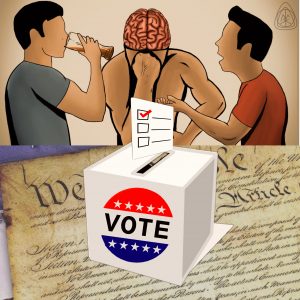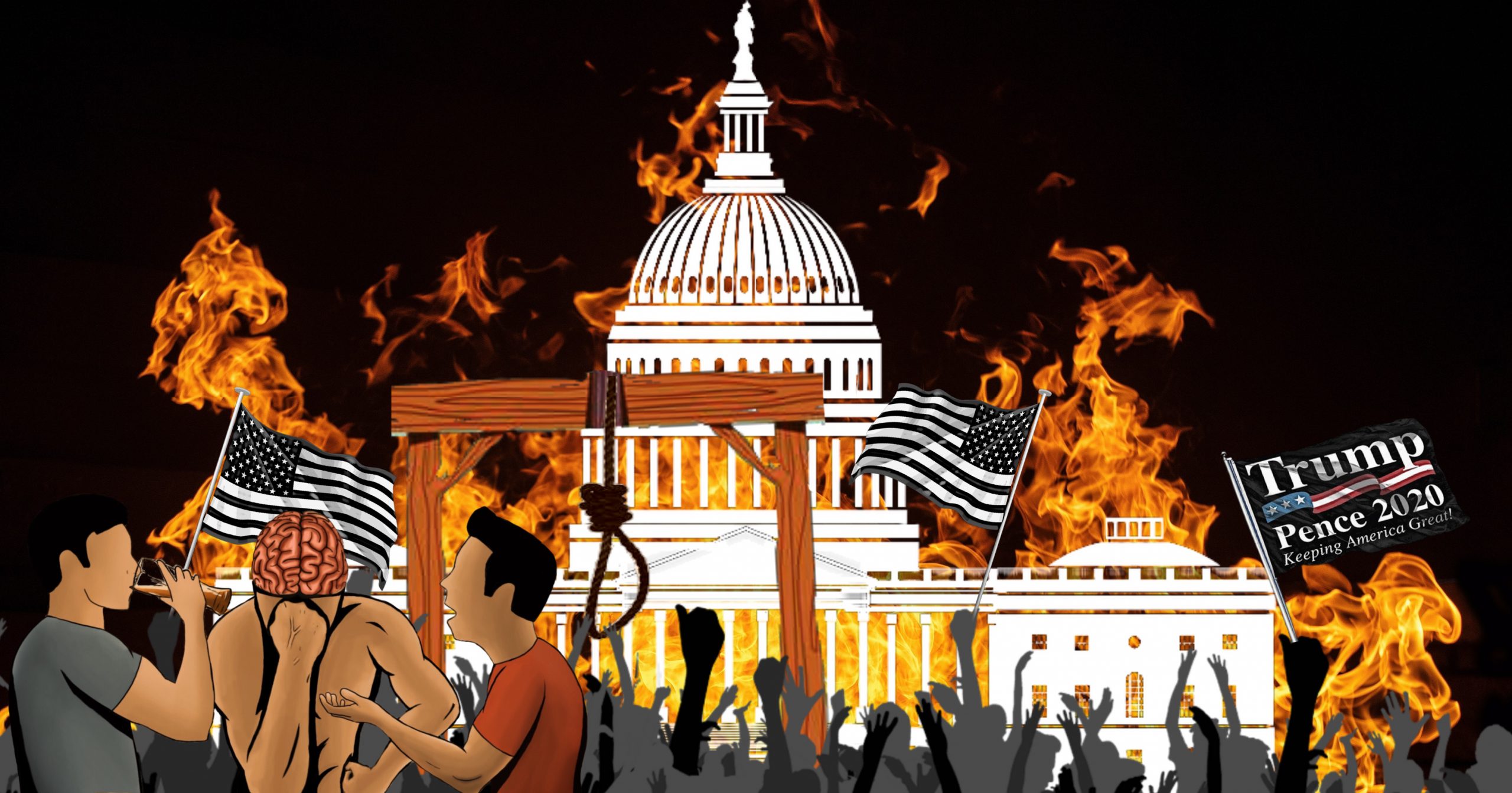Recorded with the riot at our nation’s Capitol fresh on...
Read More
In Episode 3 of Thunken Philosofers, we finish our conversation about the Electoral College. After going over the history in part one, we look ahead to see where the system is going and how we might affect it.
Show Notes:
What is the general consensus on the Electoral College?
According to a Politico poll this year; half of voters said the national popular vote should be used for presidential elections while more than the 34 percent thought they should be based on the Electoral College. Sixteen percent of voters had no opinion. – Politico Poll 03/27/2019
The Democratic nominee has won the most votes in six of the last seven presidential elections — but twice, in 2000 and 2016, lost the Electoral College count.
As a result, this poll finds the issue falls somewhat along partisan lines. Democratic voters strongly support the popular vote, 72 percent to 16 percent. Republicans’ preference for the Electoral College is not as overwhelming, being roughly two to one, with 57 percent supporting the electoral college as opposed to the 30 percent that support a popular vote.
How do we change it?
Since the Electoral College process is part of the original design of the U.S. Constitution it would be necessary to pass a Constitutional amendment to change this system.
2/3 of House and Senate and 3/4 of state legislatures
The National Popular Vote interstate compact would render the Electoral College irrelevant by getting states with the necessary 270 electoral votes to tie all of their electoral votes to the national popular vote.
The National Popular Vote bill has been enacted by 16 jurisdictions possessing 196 electoral votes, including 5 small jurisdictions (DC, DE, HI, RI, VT), 8 medium-sized states (CO, CT, MD, MA, NJ, NM, OR, WA), and 3 big states (CA, IL, NY). The bill will take effect when enacted by states with 74 more electoral votes. The bill has passed at least one chamber in 8 additional states with 75 more electoral votes (AR, AZ, ME, MI, MN, NC, NV, OK). A total of 3,408 state legislators from all 50 states have endorsed it.
What would reform look like?
You could argue this as the path towards a multi-party system instead of the two-party one today.
The winner-take-all system in effect in 48 states widens the margin of victory for majority parties while stifling third parties. Third parties with national appeal can’t win states unless they have a plurality of the vote in those specific states. This makes it incredibly difficult.
Are some reforms/changes more pragmatic than others?
The National Popular Vote bill is probably the most pragmatic approach as it simply negates the effects of the electoral college. It also negates the effect of faithless electors. Since it’s passed by individual states, the threshold for becoming a reality is much lower
Ranked-Choice Voting (RCV) could be a great way to supplement these changes to our electoral system as well
Sources:
- The National Popular Vote Interstate Compact
- Ranked-choice voting (RCV)
- What is the Electoral College? – National Archives and Record Administration
- Federalist Paper No. 68: The Mode of Electing the President – Alexander Hamilton
- Electoral College Fast Facts – History, Art & Archives
- The Constitution of the United States
- How the Electoral College Works – How Stuff Works
- Get Rid Of The Electoral College? It Would Lead To The Break-Up Of America, Or Worse
- Poll: Voters prefer popular vote over Electoral College – Politico








